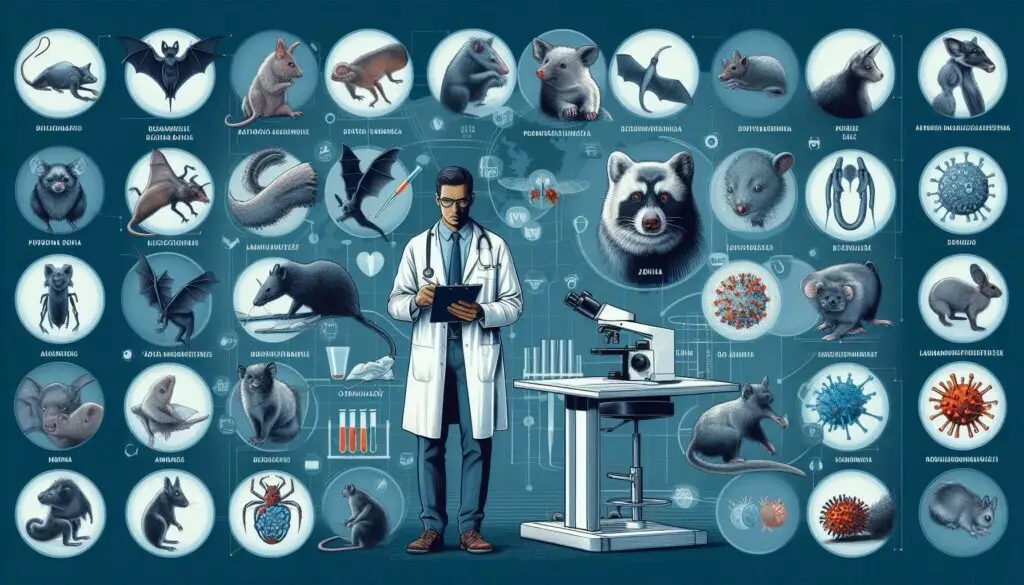Leptospirosis and Weil’s Disease

Introduction to Leptospirosis
Leptospirosis is a bacterial infection caused by Leptospira bacteria. This disease can affect both humans and animals. It often spreads through contaminated water or soil. Understanding this disease is crucial for prevention and treatment.
What Causes Leptospirosis?
The primary source of leptospirosis is contact with water contaminated by animal urine. Rodents are common carriers. Other animals, such as cattle, pigs, and dogs, can also transmit the bacteria. For more detailed information on the bacteria, you can visit the Centers for Disease Control and Prevention (CDC).
How Does Transmission Occur?
Leptospirosis spreads through several routes:
- Contaminated Water: Swimming or wading in water that has been polluted.
- Soil Contact: Working in wet soil that contains infected animal urine.
- Direct Contact: Handling infected animals or their tissues.
Who Is at Risk?
Certain groups are more vulnerable to leptospirosis:
- Farmers and agricultural workers
- Veterinarians and animal handlers
- People who participate in outdoor activities like camping or hiking
Understanding your risk factors is essential for taking preventive measures.
Symptoms of Leptospirosis
Symptoms of leptospirosis can vary widely. They usually appear 5 to 14 days after exposure. Here’s a breakdown of what to look for.
Initial Symptoms (Septicemic Phase)
In the first phase, symptoms resemble those of the flu:
- High Fever: Often sudden onset.
- Chills: Accompanied by shivering.
- Muscle Aches: Particularly in the calves and lower back.
- Headache: Can be severe.
- Nausea and Vomiting: Some may experience gastrointestinal upset.
These symptoms can lead to misdiagnosis, so awareness is crucial.
Severe Symptoms (Immune Phase)
If untreated, leptospirosis can progress to a more severe phase:
- Jaundice: Yellowing of the skin and eyes indicates liver involvement.
- Kidney Damage: Renal failure may occur.
- Respiratory Issues: Coughing up blood or difficulty breathing.
- Meningitis Symptoms: Such as severe headache and stiff neck.
For more details on symptoms, refer to the World Health Organization (WHO).
Weil’s Disease: A Severe Form of Leptospirosis
Weil’s disease is a severe manifestation of leptospirosis. It requires immediate medical attention due to its potential life-threatening complications.
Key Features of Weil’s Disease
Weil’s disease presents with:
- Severe Jaundice: Indicates significant liver damage.
- Acute Kidney Failure: This can lead to dialysis needs.
- Hemorrhagic Symptoms: Internal bleeding may occur.
Recognizing these symptoms early can save lives.
Diagnosis of Leptospirosis
Diagnosing leptospirosis involves clinical evaluation and laboratory tests. Doctors often consider patient history along with symptom presentation.
Laboratory Tests
- Serology Tests: Detect antibodies against Leptospira bacteria.
- PCR Tests: Identify bacterial DNA in blood or urine samples.
- Culture Tests: Grow bacteria from blood or tissue samples (less commonly used).
Early diagnosis is vital for effective treatment.
Treatment Options for Leptospirosis
Treatment for leptospirosis primarily involves antibiotics. Commonly prescribed antibiotics include:
- Doxycycline
- Penicillin
- Amoxicillin
Supportive Care
In severe cases, hospitalization may be necessary. Patients may require:
- Intravenous fluids
- Kidney dialysis if renal failure occurs
- Symptomatic treatment for fever and pain relief
For more information about treatment protocols, check out the National Institutes of Health (NIH).
Prevention Strategies
Preventing leptospirosis involves reducing exposure to contaminated environments. Here are some effective strategies:
Avoid Contaminated Water
Do not swim or wade in water that may be contaminated. This includes lakes, rivers, or floodwaters where animals might have urinated.
Use Protective Gear
If you work in high-risk environments:
- Wear rubber boots when wading through potentially contaminated areas.
- Use gloves when handling animals or cleaning up animal waste.
Vaccination for Animals
Vaccinating pets, especially dogs, against leptospirosis can help reduce transmission risks. Consult your veterinarian for vaccination schedules.
Rodent Control
Implement rodent control measures around homes and farms to minimize contact with infected animals.
Public Health Awareness
Public health campaigns play a crucial role in educating communities about leptospirosis. Awareness initiatives help inform people about risks and prevention methods.
Community Education Programs
Local health departments often provide educational resources about leptospirosis. These programs aim to inform at-risk populations about safe practices.
For further reading on public health initiatives related to leptospirosis, visit Healthline.
Conclusion
Leptospirosis is a serious bacterial infection that can lead to severe health complications if not treated promptly. Understanding its transmission routes, symptoms, and prevention strategies is vital for reducing risk. By staying informed and taking appropriate precautions, individuals can protect themselves from this potentially life-threatening disease.
For more pearls of Vets Wisdom:
Pedigree Selection in Livestock






Responses